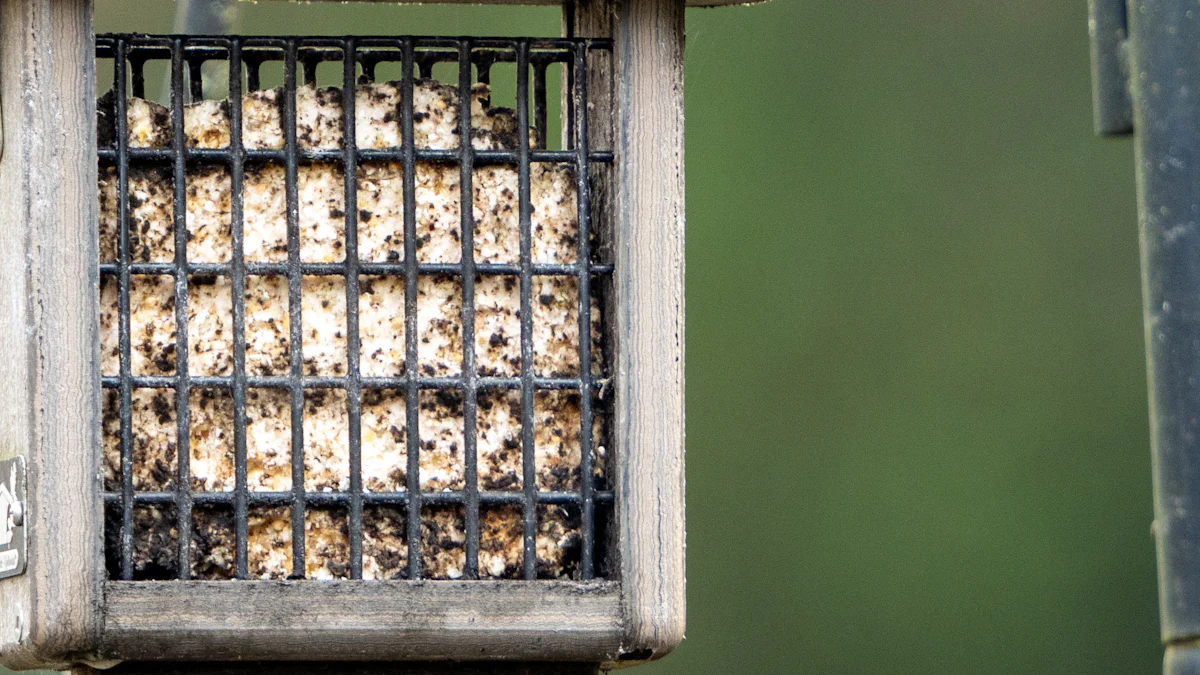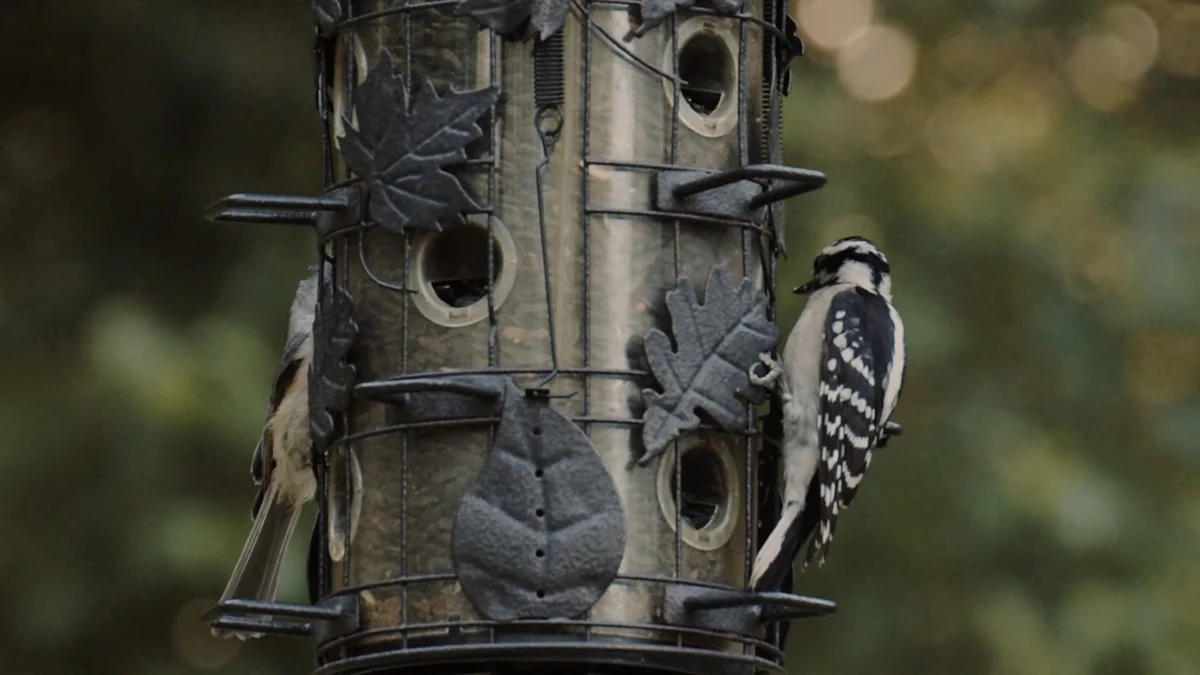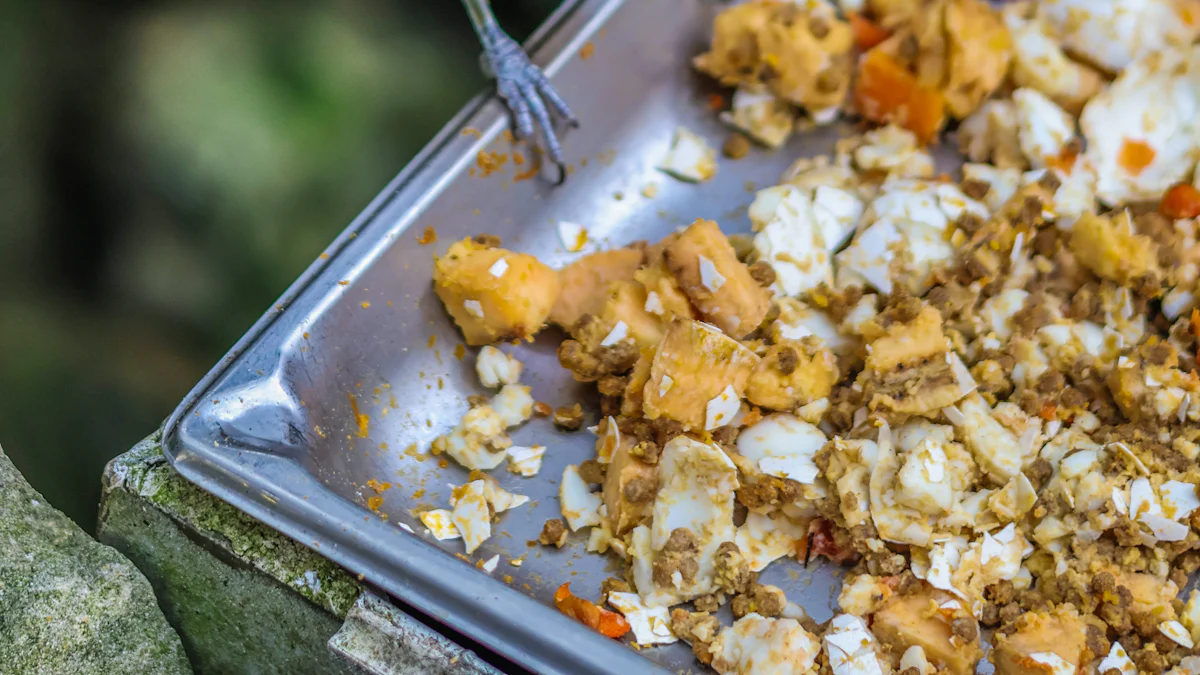
Bulk mealworms for birds are a powerhouse of nutrition, offering high levels of protein, healthy fats, and essential nutrients. These tiny insects play a vital role in supporting muscle growth and feather development. Birds benefit greatly from bulk mealworms during demanding periods like molting or breeding. Their rich protein content fuels energy and aids in recovery, while fats provide sustained vitality. Feeding bulk mealworms ensures a steady supply of this natural superfood, making it both economical and practical for bird enthusiasts. Whether for wild birds or backyard companions, bulk mealworms naturally enhance their health and growth.
Key Takeaways
- Bulk mealworms are a rich source of protein and healthy fats, essential for muscle growth and feather development in birds.
- Feeding mealworms during critical periods like molting and breeding enhances energy levels and supports recovery.
- Mealworms are easy to digest, making them suitable for birds of all sizes, including young chicks.
- Incorporating mealworms into a bird’s diet can improve overall health, boost immunity, and promote strong bone development.
- Offering mealworms consistently helps attract a variety of bird species to your yard, enriching your birdwatching experience.
- Proper storage of mealworms, whether live or dried, is crucial to maintain their nutritional value and freshness.
- Combining mealworms with other foods like seeds, fruits, and suet creates a balanced diet that meets birds’ diverse nutritional needs.
Nutritional Benefits of Bulk Mealworms For Birds

High Protein Content for Muscle and Feather Development
Protein plays a crucial role in helping birds grow strong muscles and develop healthy feathers. Bulk mealworms for birds provide an excellent source of protein, making them a perfect addition to their diet. Birds rely on protein to repair tissues, build muscle strength, and support feather regeneration during molting. For example, bluebirds and other insect-eating species thrive when offered mealworms, as these critters meet their high protein needs.
Feeding mealworms regularly ensures birds get the nutrients they need to stay active and vibrant. Whether it’s a backyard bird or a wild one preparing for migration, the protein in mealworms helps them maintain energy and recover from physical stress. Offering mealworms in a shallow dish or tray makes it easy for birds to access this nutritious treat.
Healthy Fats for Sustained Energy and Vitality
Fats are essential for birds, especially during periods of high activity or harsh weather. Bulk mealworms for birds are packed with healthy fats that provide long-lasting energy. These fats help birds stay warm in winter and fuel their bodies during breeding or migration. Unlike seeds, which may lack certain nutrients, mealworms offer a balanced source of energy that supports overall vitality.
Dried mealworms, in particular, are convenient to store and serve while still delivering the necessary fats birds need. Soaking dried mealworms in water before feeding can also add hydration, especially during hot summer months. This simple step ensures birds stay nourished and hydrated, making mealworms a year-round favorite.
Rich in Calcium, Vitamins, and Essential Nutrients
Calcium and vitamins are vital for birds’ bone health, egg production, and overall development. Bulk mealworms for birds contain these essential nutrients, making them a well-rounded food choice. Calcium strengthens bones and supports healthy egg-laying in breeding birds. Vitamins and minerals found in mealworms boost immunity and improve feather quality.
Both live and dried mealworms offer these benefits, though live mealworms provide additional hydration. Feeding mealworms during critical growth stages, such as chick-rearing, ensures young birds develop strong bones and healthy feathers. By incorporating mealworms into their diet, bird enthusiasts can help their feathered friends thrive naturally.
A Natural and Easily Digestible Food Source
Mealworms offer birds a food source that is both natural and easy to digest. Their soft bodies make them an ideal choice for birds of all sizes, including young chicks and smaller species. Unlike harder seeds or grains, mealworms require minimal effort for birds to consume, reducing the energy spent on digestion. This allows birds to focus their energy on growth, activity, and survival.
Both live and dried mealworms provide significant nutritional benefits. Live mealworms, with their natural moisture content, help keep birds hydrated, especially during warmer months. Dried mealworms, on the other hand, are convenient to store and serve while still delivering essential nutrients like protein, fats, and fiber. Soaking dried mealworms in water before feeding can enhance their digestibility and add hydration, making them even more beneficial for birds.
Birds that naturally consume insects in the wild, such as bluebirds and robins, find mealworms particularly appealing. Offering mealworms in a shallow dish or tray ensures easy access and encourages regular feeding. This simple feeding method supports birds during critical times, such as migration or harsh winters, when their energy needs are higher. By incorporating bulk mealworms for birds into their diet, bird enthusiasts can provide a reliable and digestible food source that promotes health and vitality year-round.
Growth Stages Where Bulk Mealworms For Birds Are Most Effective
Supporting Feather Growth and Molting
Feather growth and molting are critical stages in a bird’s life. During these periods, birds require a diet rich in protein to regenerate feathers and maintain their energy levels. Bulk mealworms for birds provide an excellent source of protein, making them an ideal food choice. The high protein content supports the development of strong, vibrant feathers, which are essential for flight and insulation.
Molting can be physically demanding for birds. They shed old feathers and grow new ones, which consumes a significant amount of energy. Offering mealworms during this time helps birds recover faster and stay active. Live mealworms, with their natural moisture content, also aid in hydration, especially during warmer months. Placing mealworms in a shallow dish or tray ensures easy access, encouraging regular feeding and supporting birds through this challenging phase.
Enhancing Egg-Laying and Breeding Success
Breeding season is another crucial stage where birds benefit greatly from mealworms. The nutrients in mealworms, particularly protein and calcium, play a vital role in egg production and the overall health of breeding birds. Calcium strengthens eggshells, reducing the risk of breakage, while protein provides the energy needed for courtship and nesting activities.
Mealworms also support the nutritional needs of parent birds as they prepare to feed their young. Birds like bluebirds and robins, which naturally consume insects, find mealworms especially appealing during this time. By incorporating mealworms into their diet, bird enthusiasts can help improve breeding success and ensure the next generation of birds thrives.
Feeding Chicks for Optimal Development
Young chicks require a nutrient-dense diet to grow strong and healthy. Mealworms offer a natural and easily digestible food source, making them perfect for feeding chicks. The soft bodies of mealworms are easy for chicks to consume, reducing the energy spent on digestion and allowing more energy to be directed toward growth.
Live mealworms provide additional hydration, which is particularly beneficial for chicks during hot weather. Dried mealworms, when soaked in water, can also serve as a hydrating and nutritious option. Feeding mealworms to chicks ensures they receive the protein, fats, and essential nutrients needed for muscle development, feather growth, and overall vitality. This simple addition to their diet can make a significant difference in their early development.
Helping Wild Birds During Harsh Weather
Wild birds face significant challenges during harsh weather conditions, such as extreme cold or heat. Providing them with a reliable food source like mealworms can make a noticeable difference in their survival and well-being. Mealworms, rich in protein and fats, offer the energy birds need to endure these tough periods. Their high nutritional value helps birds maintain body heat during winter and recover from physical stress caused by severe weather.
During cold months, many natural food sources become scarce. Insects, a primary component of many birds’ diets, are often unavailable. Offering mealworms fills this gap, ensuring birds receive the nutrients they need. Dried mealworms, in particular, are convenient to store and serve. Soaking them in water before feeding adds hydration, which is especially beneficial when water sources freeze over.
In summer, wild birds expend extra energy searching for food and staying hydrated. Live mealworms, with their natural moisture content, provide both nutrition and hydration. Placing mealworms in a shallow dish or tray makes them easily accessible, encouraging regular feeding. This simple act supports birds as they navigate the challenges of extreme heat.
Mealworms also attract a variety of bird species, including robins, bluebirds, and sparrows. These birds rely on insects for their diet and find mealworms irresistible. By offering mealworms consistently, bird enthusiasts can help wild birds thrive, even in the most demanding weather conditions. Supporting birds during these times not only aids their survival but also enhances the joy of birdwatching as they return to feeders regularly.
Feeding Bulk Mealworms For Birds: Best Practices

Determining Appropriate Portion Sizes
Feeding birds the right amount of mealworms ensures they get the nutrition they need without overfeeding. Portion sizes depend on the type of bird and their activity level. Smaller birds, like sparrows, may only need a few mealworms per feeding, while larger species, such as bluebirds, can consume more. Observing the birds’ behavior helps determine the ideal portion. If mealworms remain uneaten for long periods, reducing the quantity might be necessary.
A general guideline is to start with a small handful of mealworms and adjust based on how quickly the birds eat them. For wild birds, offering mealworms in moderation prevents waste and avoids attracting unwanted pests. Regularly monitoring the feeding area ensures that the birds are consuming the mealworms efficiently.
How Often to Feed Mealworms
Consistency in feeding helps birds rely on mealworms as a dependable food source. Offering mealworms once or twice daily works well for most bird species. Morning feedings provide energy for the day, while evening feedings help birds replenish after their activities. During breeding or molting seasons, increasing the frequency of feedings supports their higher nutritional needs.
For backyard birds, setting a routine feeding schedule encourages them to visit regularly. Wild birds benefit from mealworms during harsh weather or migration periods when natural food sources are scarce. However, it’s important to avoid overfeeding, as birds should still forage for other natural foods to maintain a balanced diet.
Choosing the Right Feeders for Mealworms
Selecting the right feeder makes it easier for birds to access mealworms while keeping them safe from predators. Shallow dishes or trays work well for live mealworms, as they allow birds to see and pick up the insects easily. For dried mealworms, platform feeders or specialized mealworm feeders with small compartments keep the food contained and accessible.
Placing feeders in sheltered areas protects the mealworms from rain and wind. Elevated feeders prevent ground predators from reaching the birds. Cleaning the feeders regularly ensures hygiene and prevents the spread of diseases. By choosing the right feeder and maintaining it properly, bird enthusiasts create a safe and inviting feeding environment.
Combining Mealworms with Other Foods for a Balanced Diet
Birds thrive on variety, and combining mealworms with other foods creates a balanced diet that meets their diverse nutritional needs. While mealworms are rich in protein, fats, and essential nutrients, they work best when paired with other food sources. This approach ensures birds receive a well-rounded diet that supports their health and growth.
1. Pairing Mealworms with Seeds and Grains
Seeds and grains provide carbohydrates, which are essential for energy. Mixing mealworms with sunflower seeds, millet, or cracked corn creates a nutrient-packed blend. Birds like sparrows and finches enjoy this combination, as it offers both quick energy and sustained nourishment. Adding mealworms to seed mixes also attracts insect-eating birds, expanding the variety of species visiting feeders.
2. Adding Fruits and Vegetables
Fresh fruits and vegetables supply vitamins, minerals, and hydration. Sliced apples, berries, or chopped leafy greens complement the protein in mealworms. These additions boost immunity and improve feather quality. For example, bluebirds benefit from the combination of mealworms and berries, as it mirrors their natural diet in the wild. Offering this mix in a shallow dish encourages birds to consume a variety of nutrients.
3. Including Suet for Extra Energy
Suet, made from animal fat, provides a concentrated energy source. Combining suet with mealworms creates a high-energy treat, especially valuable during winter or migration. Birds like woodpeckers and nuthatches find this mix irresistible. Suet cakes with embedded mealworms are easy to hang in feeders, making them accessible to birds while keeping the feeding area tidy.
4. Offering Mealworms with Specialized Bird Food
Specialized bird foods, such as nectar for hummingbirds or pellets for parrots, can also pair well with mealworms. For insect-eating species, mealworms enhance the nutritional value of their regular diet. This combination supports muscle development and feather regeneration, particularly during molting or breeding seasons.
"Both dried and live mealworms are a great source of protein, which is very important since lack of protein in a diet can lead to dull and brittle feathers that easily break." – Scientific Research Findings
By combining mealworms with other foods, bird enthusiasts can create a diverse and nutritious feeding experience. This approach not only supports the health of backyard birds but also attracts a wider range of species, enriching the birdwatching experience.
Storage Tips for Bulk Mealworms For Birds
Proper storage of mealworms ensures they remain fresh, nutritious, and safe for birds. Whether dealing with live or dried mealworms, following the right practices can make a big difference in their quality and longevity.
Storing Live Mealworms in Optimal Conditions
Live mealworms require specific conditions to thrive. Keeping them in a cool, dry place helps maintain their health and prevents premature pupation. A temperature range of 40–50°F works best. Refrigerators often provide the ideal environment for storing live mealworms. However, avoid placing them in the freezer, as extreme cold can kill them.
Use a breathable container, such as a plastic tub with small ventilation holes, to store live mealworms. Add a layer of wheat bran or oatmeal as bedding, which also serves as food for the mealworms. Regularly check the container for moisture buildup, as excess humidity can lead to mold growth. Remove any dead mealworms promptly to keep the environment clean and healthy.
Feeding live mealworms small amounts of fresh vegetables, like carrots or potatoes, provides hydration and keeps them active. Replace these vegetables every few days to prevent spoilage. By maintaining these conditions, live mealworms stay fresh and ready to feed birds whenever needed.
Keeping Dried Mealworms Fresh and Nutritious
Dried mealworms offer convenience and a long shelf life, but proper storage is essential to preserve their nutritional value. Store dried mealworms in an airtight container to protect them from moisture and pests. A cool, dark place, such as a pantry or cupboard, works well for storage. Avoid exposing them to direct sunlight or high humidity, as these conditions can degrade their quality.
For added freshness, consider using vacuum-sealed bags or containers with desiccant packets. These methods help remove excess air and moisture, extending the shelf life of dried mealworms. If you purchase mealworms in bulk, divide them into smaller portions and store them separately. This approach minimizes the risk of contamination and makes it easier to access the right amount for feeding.
Soaking dried mealworms in water before feeding can enhance their appeal to birds. This step rehydrates the mealworms, making them softer and easier to digest. It also provides an extra source of hydration, especially valuable during hot weather or for young chicks that rely on moisture from their food.
Avoiding Common Storage Mistakes
Improper storage can lead to spoiled mealworms, wasted money, and disappointed birds. Avoid these common mistakes to ensure your mealworms remain in top condition:
-
Exposing Mealworms to Moisture: Moisture is the biggest enemy of both live and dried mealworms. For live mealworms, excessive humidity encourages mold growth. For dried mealworms, it causes them to become soggy and lose their crunch.
-
Storing in Unsealed Containers: Leaving mealworms in open or loosely sealed containers invites pests like ants and rodents. Always use airtight containers to keep mealworms safe and fresh.
-
Ignoring Temperature Requirements: Live mealworms stored in overly warm conditions will pupate quickly, turning into beetles. On the other hand, dried mealworms exposed to heat may lose their nutritional value.
-
Overstocking Without a Plan: Buying mealworms in bulk saves money, but overstocking without proper storage can lead to spoilage. Divide large quantities into smaller portions and store them appropriately.
By avoiding these pitfalls, bird enthusiasts can ensure their mealworms remain a reliable and nutritious food source for their feathered friends.
Freezing Mealworms for Long-Term Use
Freezing mealworms is an excellent way to preserve their freshness and nutritional value for extended periods. This method works particularly well for dried mealworms, ensuring they remain a reliable food source for birds throughout the year. Proper freezing techniques can help bird enthusiasts save time and money while maintaining the quality of their bird feed.
To freeze dried mealworms, start by dividing them into smaller portions. This step makes it easier to thaw only the amount needed for feeding, reducing waste. Place the portions in airtight containers or resealable freezer bags. Removing as much air as possible from the packaging helps prevent freezer burn, which can affect the texture and taste of the mealworms. Label each container with the date of freezing to keep track of their storage time.
When ready to use, thaw the mealworms at room temperature. Avoid microwaving or using hot water, as these methods can degrade their nutritional content. Once thawed, the mealworms should be used within a few days to ensure they remain fresh and appealing to birds. For added hydration, soaking the thawed mealworms in water before serving can make them even more beneficial, especially during hot weather or nesting seasons.
Freezing live mealworms requires a different approach. Since freezing kills live mealworms, this method is best suited for those who plan to use them as a non-living food source. Place the live mealworms in a breathable container and refrigerate them for a few hours to slow their activity. Once they are less active, transfer them to a freezer-safe bag or container and freeze immediately. This process ensures they remain intact and easy to handle when thawed.
Frozen mealworms are particularly useful during winter and breeding seasons when birds need extra energy and nutrients. They provide a convenient and nutritious option for wild birds, especially when natural food sources are scarce. By freezing mealworms, bird enthusiasts can ensure a steady supply of high-quality feed that supports the health and growth of their feathered visitors.
Bulk mealworms for birds offer a natural, nutrient-packed solution to support their growth and overall health. These tiny powerhouses are especially beneficial during critical periods like molting, breeding, and chick-rearing, when birds need extra energy and nutrients. By feeding mealworms in bulk, bird enthusiasts can provide a cost-effective and convenient food source that enhances vitality and development. Proper storage ensures mealworms remain fresh and nutritious over time. Including bulk mealworms in a bird’s diet not only promotes their well-being but also creates a rewarding experience for bird lovers.
FAQ
What makes mealworms a good food source for birds?
Mealworms are packed with protein, healthy fats, and essential nutrients. These qualities make them an excellent choice for supporting muscle growth, feather development, and overall vitality in birds. Birds naturally consume insects in the wild, so mealworms provide a familiar and nutritious option that aligns with their dietary needs.
Can mealworms be fed to birds year-round?
Yes, mealworms can be offered to birds throughout the year. They are especially beneficial during critical periods like molting, breeding, and harsh weather. In winter, mealworms provide energy to help birds stay warm, while in summer, they offer hydration and nutrition when natural food sources may be scarce.
Should mealworms be the only food I feed birds?
Mealworms should not be used as a standalone food. Birds thrive on a varied diet, so combining mealworms with seeds, nuts, fruits, or suet ensures they receive a balanced mix of nutrients. For example, mixing mealworms with sunflower seeds or berries creates a nutrient-rich blend that supports their health and attracts a variety of species.
Are dried or live mealworms better for birds?
Both dried and live mealworms have their benefits. Live mealworms provide hydration and are highly appealing to birds due to their movement. Dried mealworms, on the other hand, are convenient to store and serve. Soaking dried mealworms in water before feeding can make them softer and more hydrating, offering a similar benefit to live ones.
How should I store mealworms to keep them fresh?
For live mealworms, store them in a cool, dry place, such as a refrigerator, at 40–50°F. Use a breathable container with bedding like wheat bran or oatmeal. For dried mealworms, keep them in an airtight container in a cool, dark place to prevent moisture and pests. Dividing bulk quantities into smaller portions helps maintain freshness.
How often should birds be fed mealworms?
Feeding birds mealworms once or twice daily works well. Morning feedings provide energy for the day, while evening feedings help replenish their reserves. During breeding or molting seasons, increasing the frequency of feedings can support their higher nutritional needs. Always monitor how much they consume to avoid overfeeding.
Can mealworms attract specific bird species?
Yes, mealworms are particularly appealing to insect-eating birds like bluebirds, robins, and wrens. Offering mealworms can attract these species to your yard, enhancing your birdwatching experience. Placing mealworms in a shallow dish or specialized feeder makes it easier for these birds to access the food.
Is it safe to feed mealworms to wild birds?
Feeding mealworms to wild birds is safe and beneficial. Mealworms provide essential nutrients that help wild birds survive during challenging times, such as extreme weather or migration. Offering mealworms in a clean, predator-safe feeder ensures birds can enjoy them without risk.
Can mealworms be mixed with other bird foods?
Absolutely! Mixing mealworms with seeds, grains, fruits, or suet creates a balanced diet for birds. For instance, pairing mealworms with cracked corn or chopped apples adds variety and boosts their nutritional intake. This approach not only supports their health but also attracts a wider range of bird species.
Do mealworms need any preparation before feeding?
Dried mealworms can be served as-is or soaked in water to rehydrate them, making them softer and more appealing. Live mealworms require no preparation but should be stored properly to keep them fresh. For both types, placing them in a shallow dish or tray ensures easy access for birds.


